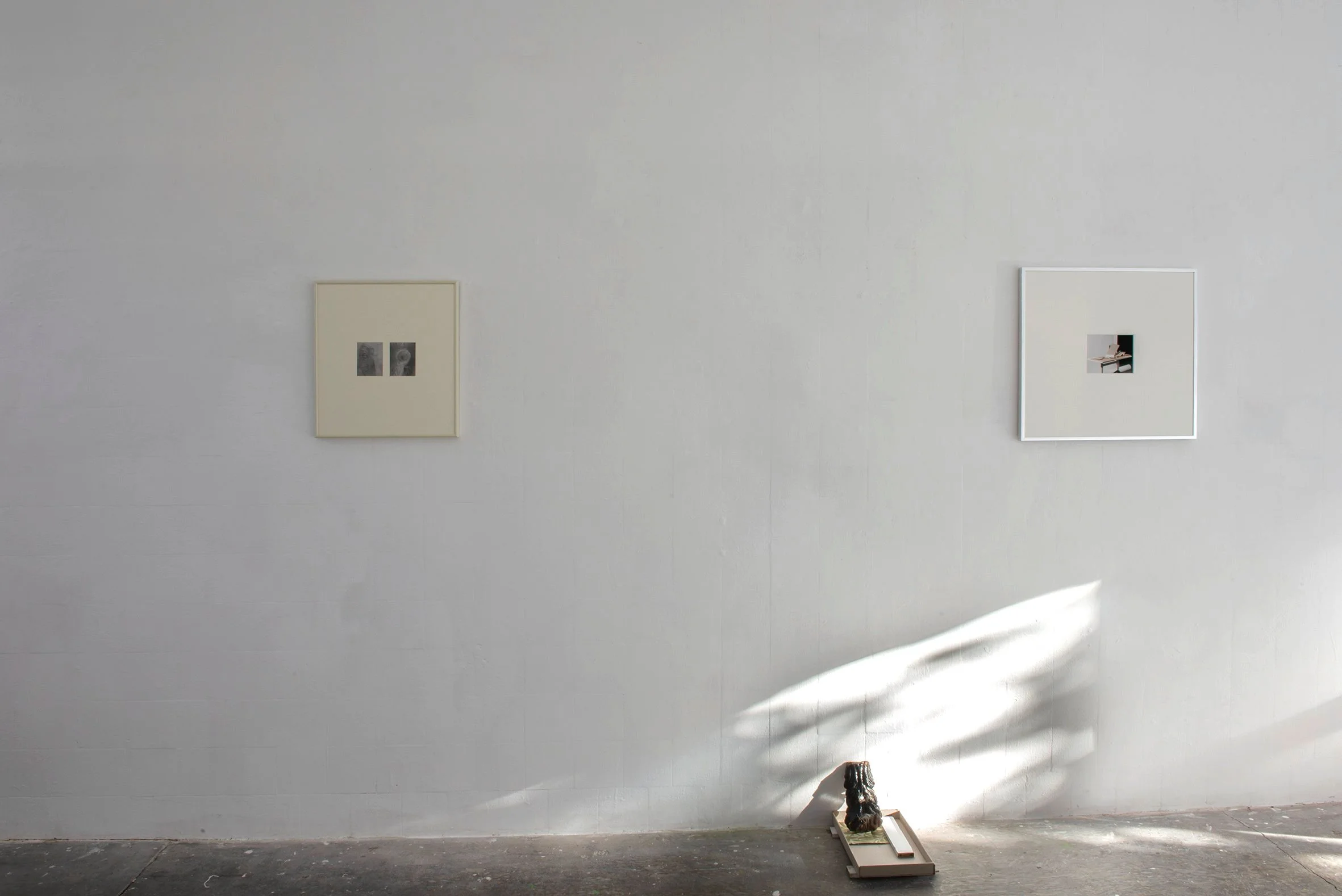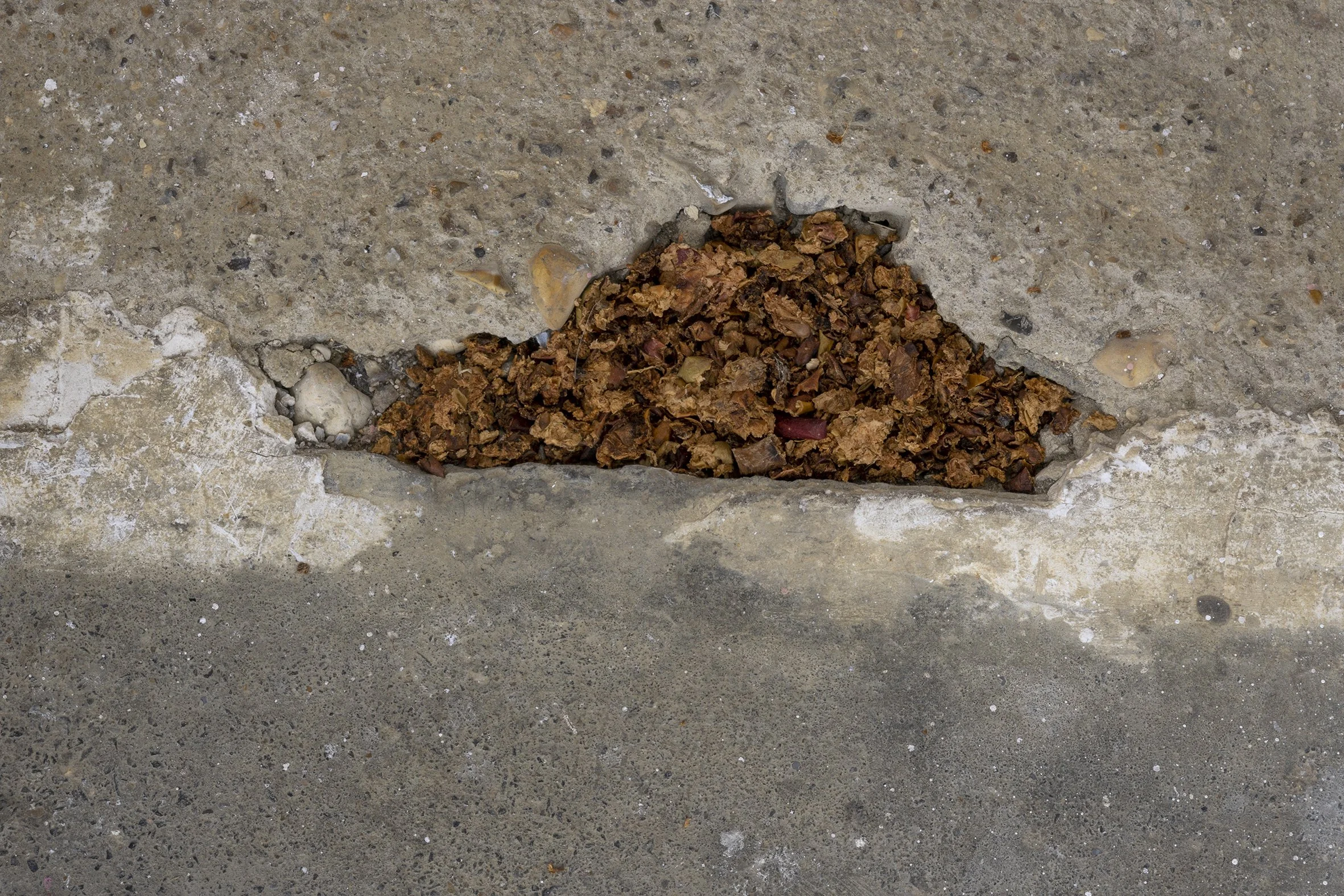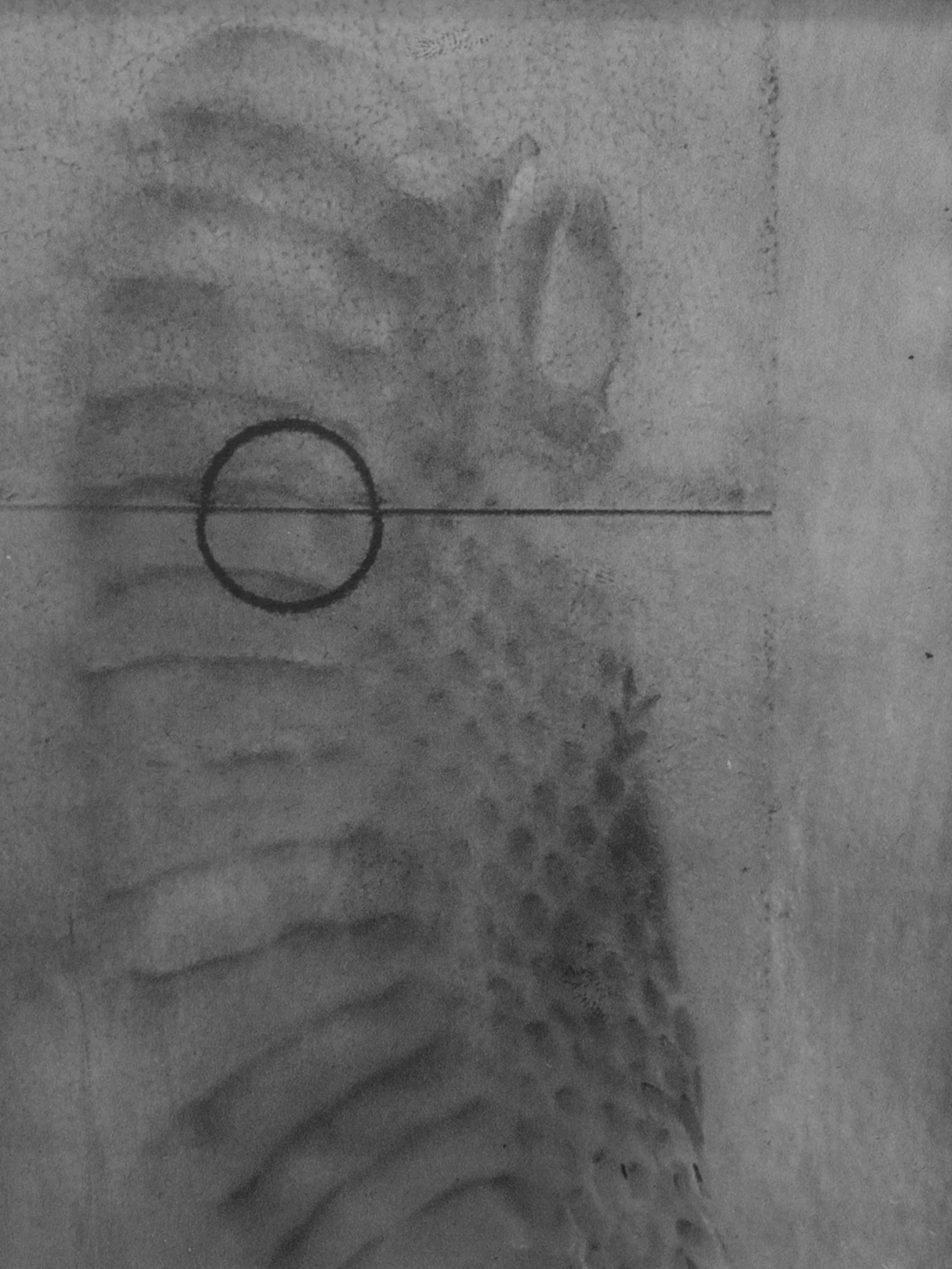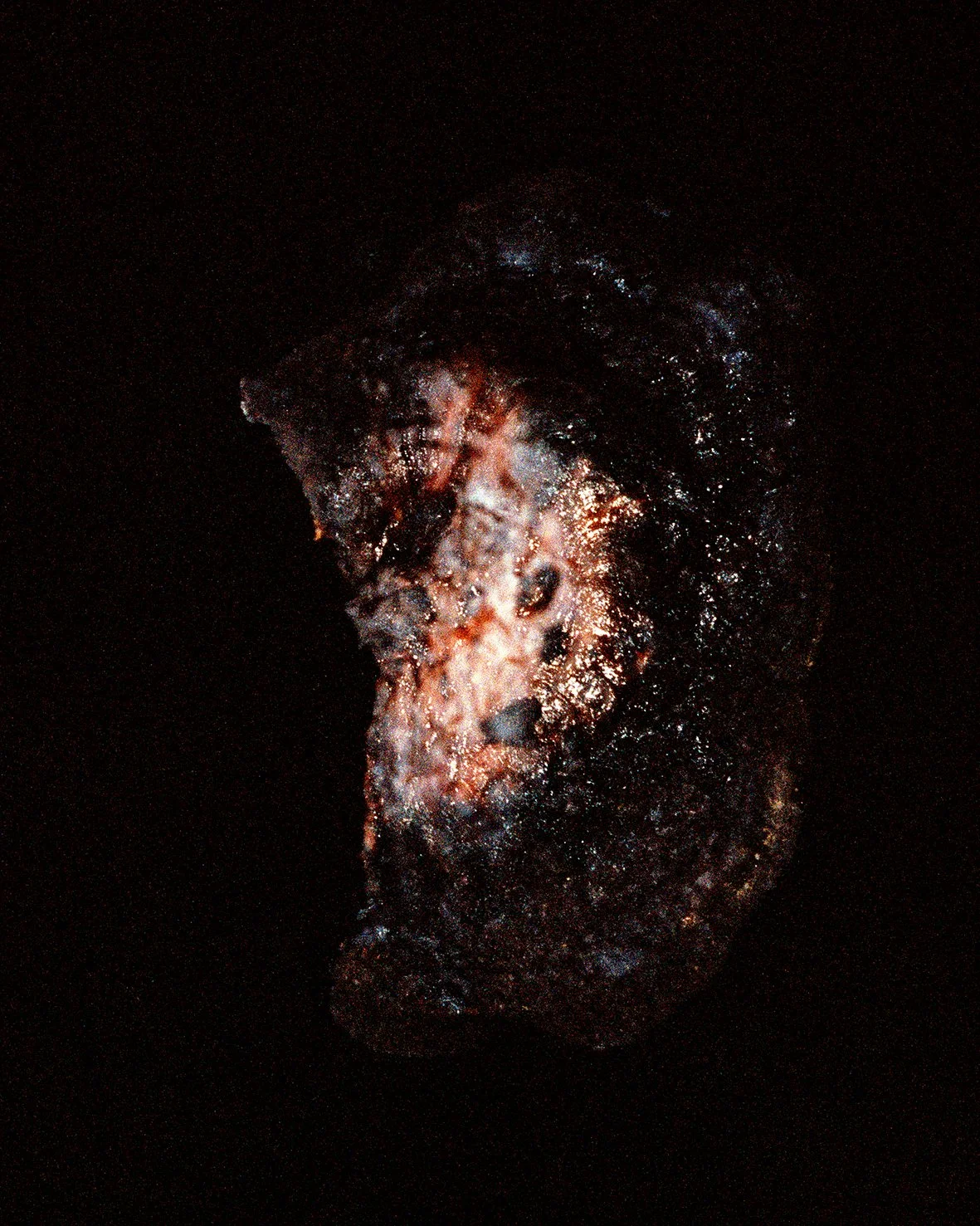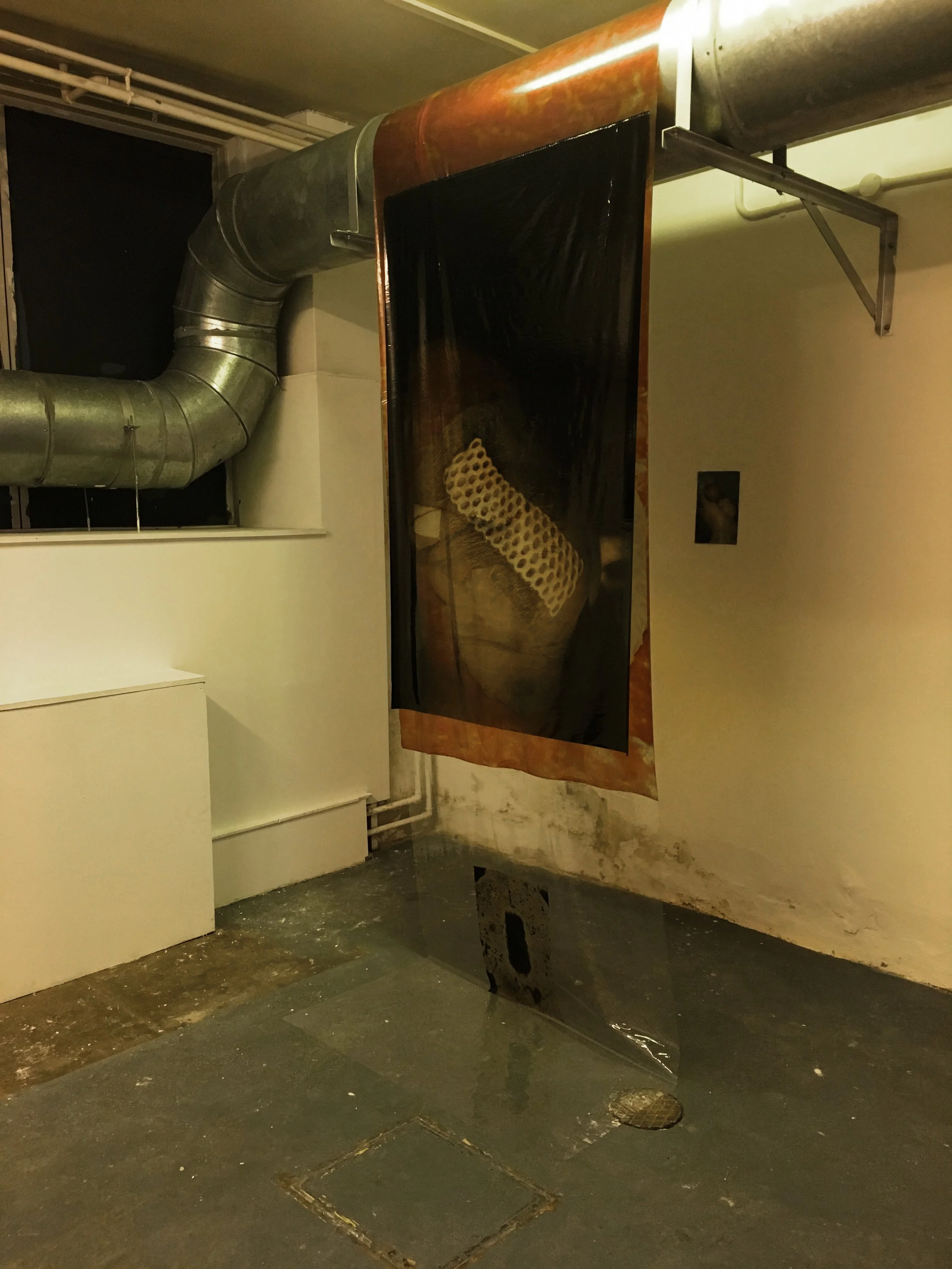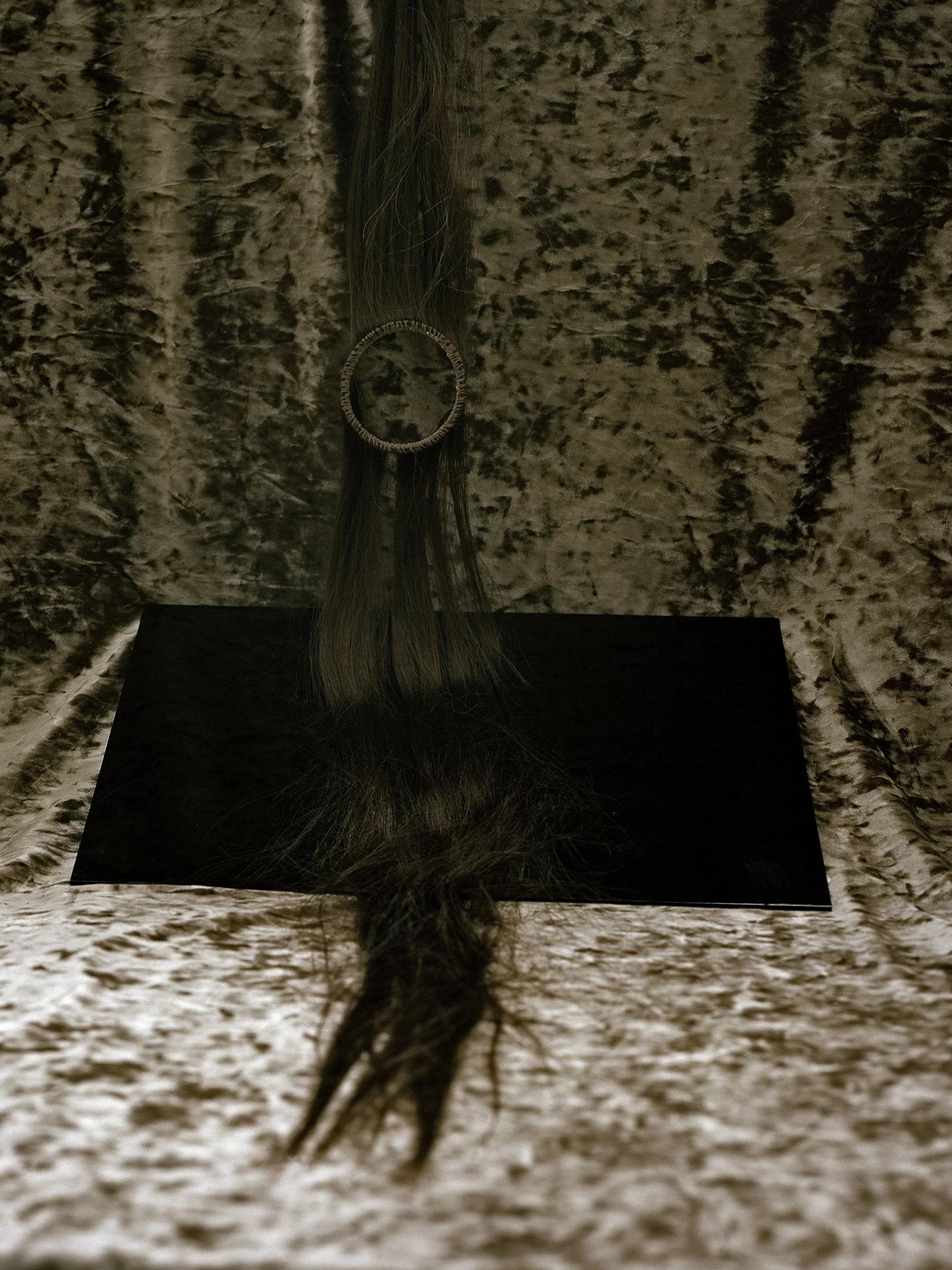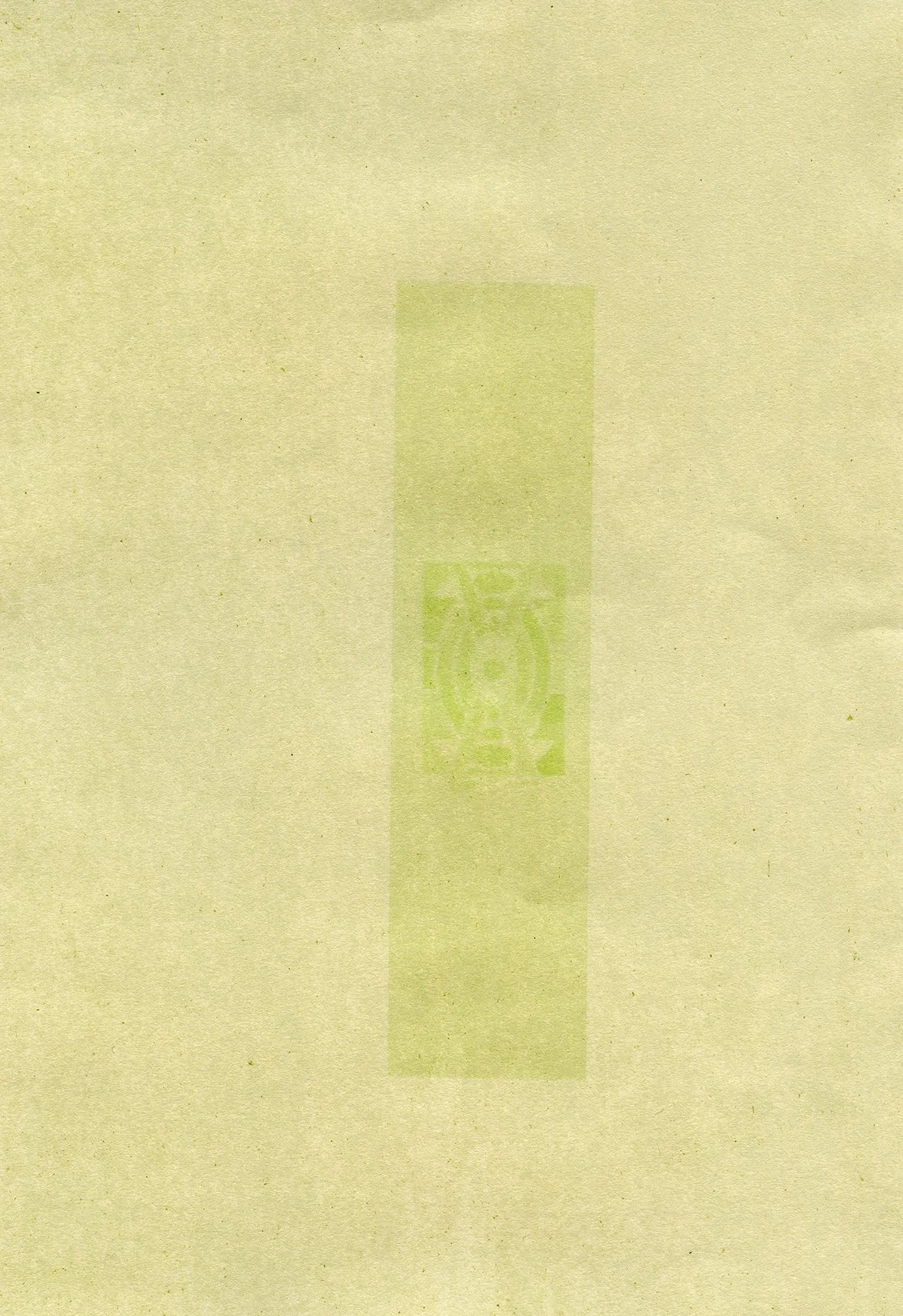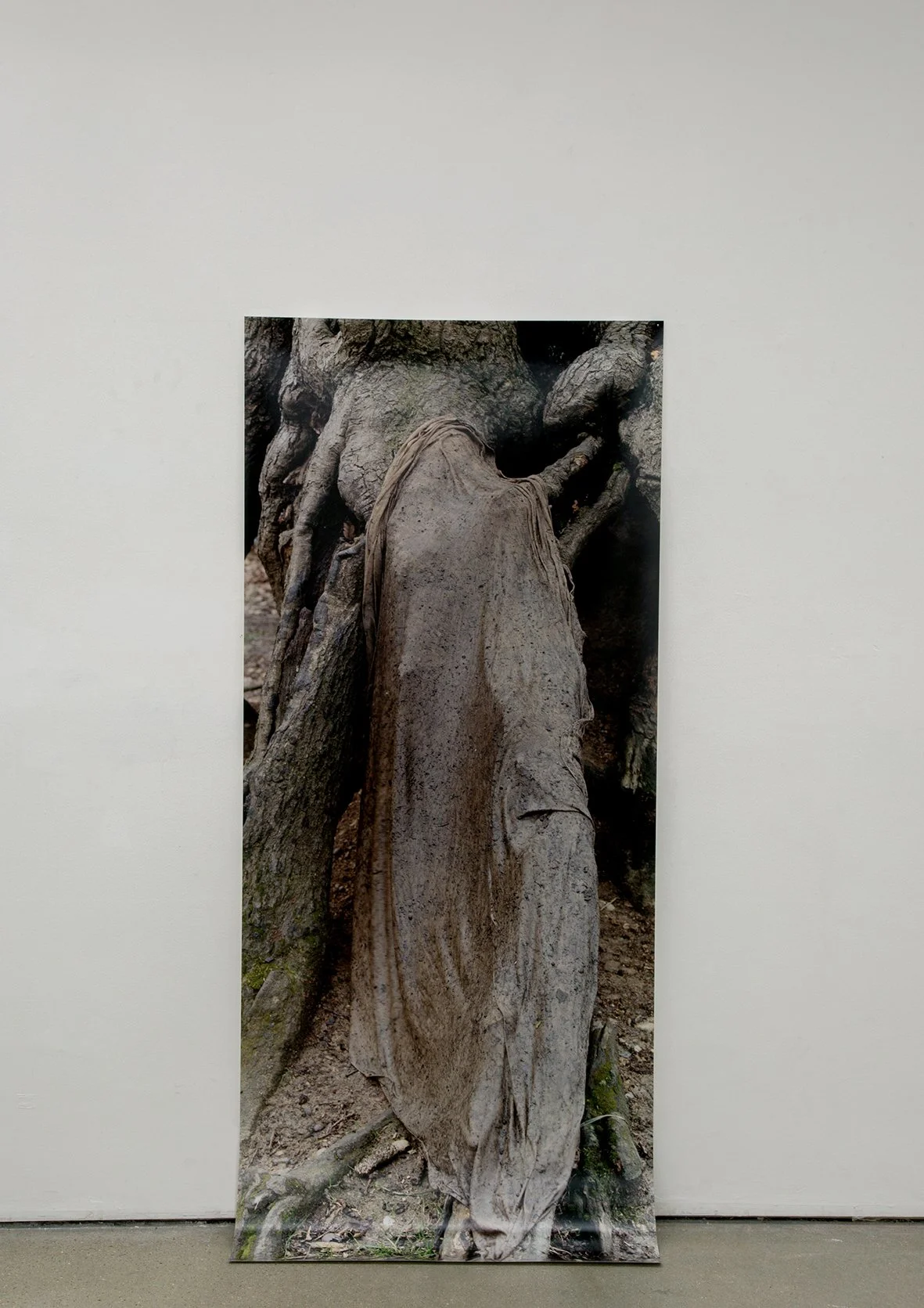from solid to liquid
2024 - now
The work draws inspiration from the apple harvest, using the natural cycle and its remnants as the foundation for her installation. Through the process of transformation, solid becomes liquid, unseen currents move through a sieve and leave a shimmer on the surface. This act of change mirrors the ritual of distillation, akin to alchemy or analogue photography where raw materials through energy (heat and light) are transmuted into new forms.
LATTICE
with Joshua Phillips
at FILET
16-24th November 2024
Lattice is an exhibition by artists Ramona Güntert and Joshua Phillips, bringing together a selection of works that embody a “patterned materiality” - a visual language shaped by form and force, time and matter. The title suggests an interplay between structure and ornament—the weaving of elements to create something that can be looked through and grown around, existing somewhere between the aesthetic and the functional.
As a verb, the term lattice may be thought of as a visual practice - gathering elements and bringing them together in order to form a cohesive pattern. Both artists reveal objects and artifacts of this nature, from analogue and digital photography, to assemblage of both found and made materials.
from solid to liquid Artwork Details
Schwärzung/Nigredo, 2024, digital C-type mounted on aluminium honeycomb, 20 x 35 cm
where light enters, 2024, algae bio material, plant cover, found glass from the Rhine, apple pomace
Lattice Installation View, 2024 left Ramona Guntert and right Joshua Phillips
where light enters, 2024, apple pomace
Carrier of last Harvest, 2024, apple pomace, copper, plant cover
where light enters, 2024, algae bio material, plant cover, found glass from the Rhine, apple pomace
Lattice Installation View, 2024 with Joshua Phillips
Carrier of last Harvest, 2024, apple pomace, copper, plant cover
Schwärzung/Nigredo, 2024, digital C-type mounted on aluminium honeycomb, 20 x 35 cm
Earth, Aether, Light, 2024, silver gelatin print, hand print 7.5 x 10 cm
Earth, Aether, Light, 2024, silver gelatin print, hand print 7.5 x 10 cm, frame 43x48 cm
where light enters, 2024, algae bio material, plant cover, found glass from the Rhine, apple pomace
Lattice Installation View, 2024
all exhibition views from Lattice - a duo show with Joshua Phillips at FILET, London
Iri
2018 - 2023
Iri is inspired by the phenomenon of iridescence in which the surface changes colour depending on the angle and perspective of the light. Iri reads the same both forwards and backwards. Even though it is a scientific appearance, it’s more about the perspective, where we stand, what we see or want to see. The mix of layers, the material, the angle of the light, the transparency.
Objects in the photographs imitate each other or mirror the next one. They create their own circular movement. Bodies are liquid, flowing from one thought to another. Their emptiness is draped with each other’s skin. The hollow shell is filled with fur. It’s a protection and not wanting to be seen. Becoming invisible.
Similar to the notion of camouflage, a change of appearance and its adaption of the object to the environment, like in my work through the camera, the process of making and also adding alterations to a space. The appearance becomes reality. The outside is produced from within, the flesh growing out and over the surface of the skin where through adaptation, individuality gets lost.
It’s like a touch of velvet, the slippery movement from the outside to the inside. Leaving us behind with a strange feeling. How do we perceive those forms? They shape themselves because they exist in everything and reappear in humans, in nature or animals.
IRI Artwork Details
IRI, 2018, Installation, Vinyl, Format, Derby, 230x130cm
Wound 3, 2020, colour hand print , 20 x 25 cm
untitled from IRI, 2018
untitled from IRI, 2018
To grow within - between, 2020, Installation, hand stitched on static cling, 50 x 60 cm, Chapters at Sankt, Berlin
IRI, 2018, Installation, static cling, Parallel Review, Lisbon
skin like a glove 2, 2020, digital collage on analogue film, 30 x 40 cm
Growing back together, 2020, 4x5 paper negative, 20 x 25 cm
Met, 2019, 4x5 paper negative, 10 x 13 cm
skin like a glove, 2020 1, digital collage printed on silver gelatin paper, 30 x 40 cm
IRI, 2018, Installation, static cling hand stitched, Same Tendency at Summerhall Edinburgh
untitled from IRI, 2018
untitled from IRI, 2018
IRI, 2018, Installation, Vinyl and static cling on metal pole, Triennale der Photograpthie at Deichtorhallen Hamburg
Schnittstelle/two cricles meeting from the series IRI, 2018
Writing about the work
“Symmetric to this approach, Ramona Güntert creates dialogues between the different materialities of the world in order to merge textures, shapes, masses, and skins in synthetic-natural hybrids. Her work follows no linear structure and obeys no hierarchy but presents a scenario full of symbolism and cosmologies, poetry, rhythms, and connections, creating a sort of an Warburgian atlas with a phenomenological view that leads the viewer to a sensorial reading of the world, erasing some boundaries and diluting masses in new beings. Through the texts of the British artist Joshua Leon, Güntert gives life to her hybrid bodies. Adding layers of identities and blurring borders, she creates images that “do not exist in the photograph.”
Part of the Syntropic Surfaces; text by Téo Pitella at Triennale der Photographie, Deichtorhallen Hamburg
June 2018
“Ramona Güntert’s work, which can be placed in the intersection of abstract photography and body representation, invites the viewers to use both their tactile references and their experiences of organic nature. She mixes different stylistic and thematic codes and creates genre hybrids in her project entitled Iri.
She does not seek to make a pleasant fusion but rather an anxious confusion of things. The hybrid that emerges can be a post-human creature, a metamorphosis. Taboos are ignored, and a superabundance of body parts, hair, fur, flakes and iridescent fluids flood the picture. Repulsive and attractive; uncanny and distracting.
Objects reiterate or mirror each other creating their own cyclic movements. It is always becoming, a form-forming form, from one point to the other without an end. In these non-anthropocentric abstractions, the flesh, the organs, the cornified body parts are not only released from the burden of the integrity of a sterile and well-formed living body but also from the existence of a human being assuch.
One can interpret them as an act of transcending the anthropocentric-humanistic aesthetics, as the dramatisation of the shift toward non-human stages of existence, or as the progressive subversion of canons concerning the representation of human beings.”
Part of the The future is ours; text by Emese Mucsi at Landskrona Festival
September 2018
I wonder what it feels like
2016 - 2022
Fibres growing through the materials like veins through the body. The inside collapses and the skin takes over what once used to be a body. Empty or full, that does not appear to matter. These folds create shapes and endless arrangements. The mass is flesh, but then something cannot just be flesh. A mass seems always solid, unbreakable. Bodies are liquid, flowing from one thought to the other.
Bodies are like oval shapes. Or trees in comparison to legs, shapes of fins in comparison to legs: shapes becoming yet more shapes. It is always a becoming, a form forming form from one point to the next without end.
While emptying it, the middle part becomes a gap, a cut. Adding means touching. Subtracting means wounding. Eyes look like mouths. They seem like bodies that have no inside, appear like something that feels like skin but is not.
These shapes are hanging. The body collapses and in its collapse, disappears. These slight gaps (like the difference between flesh and skin), appear as marks or scars, yet whose traces of wounds, this remains unclear.
Things are veiled, covered; yet in return something new about ourselves rises up. The materials in the photograph remind us of bodies. I use fragments of the everyday; transform them through size or material of the print. Hence it becomes more of a corpo- real experience similar to the physicality of printing large scale in the darkroom.
I am interested how those images exist in reality, how they can slip between repulsion and desire. And in the end still seem like fiction. Photography is not a way of documenting something or telling a story. For me, the process of image making, is rather about creating a feeling or a taste of something that I hope, will stay with the audience and make them think of their own body and their relationship to others.
I wonder what it feels like Artwork Details
In search for purple fish, 2017 colour hand print, 127 x 150 cm
Growing from the dark, 2017 digital c - type, 20 x 27 cm
A fish , 2017, glossy digital c - type, 30 x 40cm, mounted on MDF
I wonder what it feels like, 2017, Installation, Royal College of Art
untitled, 2020 Anthotype, 21 x 28 cm
A wound, 2016, colour hand print, 127 x 177 cm
To swim, 2022, liquid emulsion printed on hand dyed fabric, 100 x 160 cm
Interface/Schnitstelle 2022, polaroid and c-type on velvet cushion, 20 x 45 cm, Installation at Equivalentbehaviour
I, I , eye, 2016, collage, 2 x 3 cm


